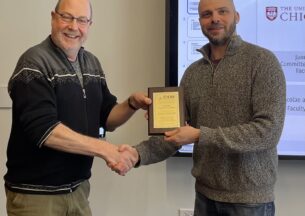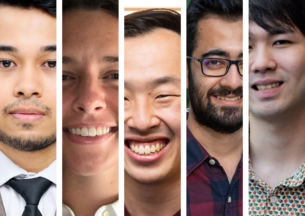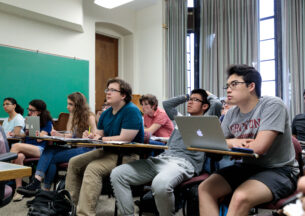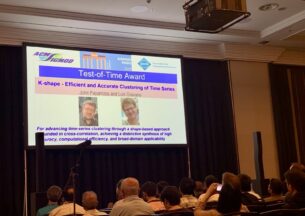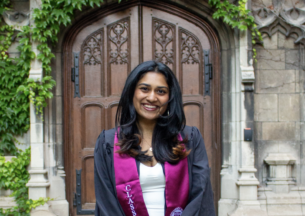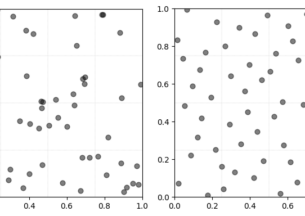Can a Doctor’s Notes Reveal When They’re Tired? New Research Illuminates the Hidden Signals of Physician Fatigue—And Raises Questions About AI in Healthcare
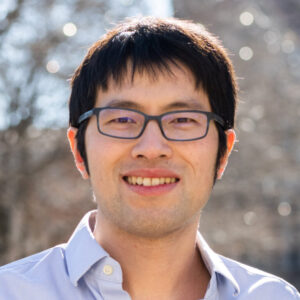
When you rush into an emergency room, you may notice the pace, the urgency, and the concentration on every face. What you probably never consider is this: Could the notes your doctor writes about you contain clues about how tired they are—and could that fatigue spill over into decisions about your care? New research from a team featuring Associate Professor Chenhao Tan from the Department of Computer Science and Data Science at the University of Chicago explores this very question, using advanced language models to read between the lines of over 129,000 clinical notes.
The study, published in Nature Communications and co-authored by phd student Chao-Chun Hsu, Ziad Obermeyer from UC Berkeley, and Tan, shines a spotlight on the written traces of physician fatigue in emergency departments and issues a warning about relying on AI to write or interpret medical notes.
Reading Fatigue Between the Lines
Medical notes aren’t just administrative paperwork; they help summarize each patient’s story, diagnosis, and treatment plan. But hidden within the words, Tan’s team discovered, are consistent signals of a physician’s fatigue state—particularly after a grueling week of emergency shifts.
The researchers trained a computational model to distinguish notes written by doctors who had worked at least five of the last seven days—a classic recipe for fatigue—from those penned by more rested physicians. The model didn’t just pick up on obvious differences. Instead, it zeroed in on subtle, interpretable features: the predictability of each word, the complexity of the writing, and even the emotional tone of certain phrases.
“This was a surprise to us,” expressed Tan. “We were surprised how the predicted fatigue is robustly correlated with other independent measures of high fatigue such as overnight shifts and high patient volumes.”
Fatigue in Text, And Its Impact on Care
 This predictability, the core task of modern large language models, became a useful indicator: Fatigued doctors wrote more formulaic notes and used fewer words expressing insight (like “I believe” or “I think”), less often used first-person pronouns, and sometimes even produced a greater proportion of tense or angry language. These textual signals aligned not just with grueling shift schedules, but also with classic signs of burnout such as working overnight or seeing particularly high patient volumes.
This predictability, the core task of modern large language models, became a useful indicator: Fatigued doctors wrote more formulaic notes and used fewer words expressing insight (like “I believe” or “I think”), less often used first-person pronouns, and sometimes even produced a greater proportion of tense or angry language. These textual signals aligned not just with grueling shift schedules, but also with classic signs of burnout such as working overnight or seeing particularly high patient volumes.
But does a tired-sounding note mean a patient gets lower-quality care? The answer, at least in the emergency department, is: sometimes yes. The researchers found that every increase in the model’s predicted fatigue score was linked to a 19 percent drop in the yield from a critical decision—testing for heart attacks, a life-or-death call in ER medicine. Instead of simply tracking the number of recent shifts, the model’s fine-grained, note-specific fatigue estimate proved more closely tied to this important performance measure.
“Traditional measures of fatigue may not capture the nuance from encounter to encounter,” stated Tan. “As a result, it may not capture subtle shifts in decision quality, especially given that measurable decision signals can also be rare in healthcare. To give an example, it can take a long time to detect a misdiagnosis.”
Caution for AI: More Fatigued Than the Doctor?
The study comes at a time when hospitals are looking to artificial intelligence for help with documentation, decision support, and even drafting parts of the clinical record. The researchers put popular AI language models to the same test—and found a surprising result: Notes drafted by large language models not only mimicked the “fatigued” patterns identified by the human-authored fatigue model, but did so even more strongly. In fact, the “fatigue” score for LLM-generated text was 74% higher than that of real physician notes.
If these models are used indiscriminately to generate or summarize patient notes, they could, in effect, amplify the very communication problems linked to tired human doctors.
“Writing is thinking,” said Tan. “AI may improve productivity and reduce physician fatigue, but it should not result in notes that ‘look’ fatigued.”
Towards Responsible AI—and Better Care
The authors urge caution, but also see opportunities. Instead of fully automating notes, AI could be used to help physicians focus on the most meaningful aspects of patient care—perhaps by flagging repetitive or predictable sections for streamline, or prompting for more nuanced observations.
The findings have implications far beyond scribbles in the hospital’s back office. They suggest new benchmarks are needed—to ensure that both human and artificial authors of medical notes provide documentation that genuinely supports high-quality care, and to remind us that behind every line of text is a clinician, subject to the same daily rhythms and strains as anyone else.
As hospitals and technology firms continue to roll out AI assistants, this research—rooted in the expertise of Professor Chenhao Tan and his colleagues—will be essential reading for everyone invested in the future of healthcare.



